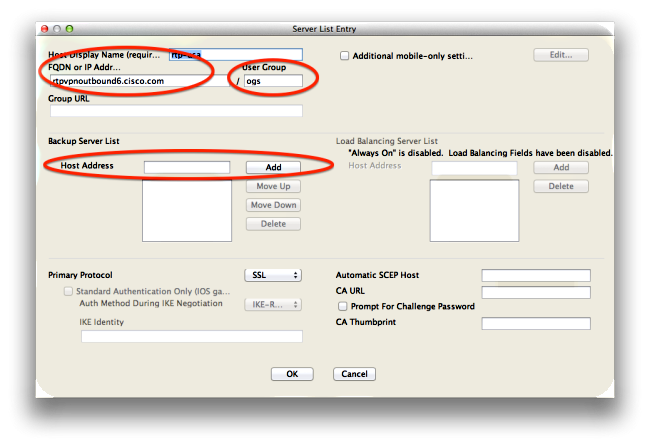- Older versions of the NAM component of the Cisco AnyConnect Secure Mobility Client will not work when you try to connect to a wireless network on a Surface Pro 3. Note This issue is unrelated to the VPN features of the Cisco AnyConnect software. This issue is specific to the wireless NAM component of the Cisco AnyConnect Secure Mobility Client.
- Right-click the Cisco AnyConnect VPN Client log, and select Save Log File as AnyConnect.evt. Note: Always save it as the.evt file format. If the user cannot connect with the AnyConnect VPN Client, the issue might be related to an established Remote Desktop Protocol (RDP) session or Fast User Switching enabled on the client PC.
- Solution: Uninstall client Cisco and then Cisco AnyConnect Network Accss Manager Filter Driver from network adapter properties. Install Cisco NAM again. Hi, after updating from version 1709 to 1803 my CISCO VPN broke.I followed this article during 1709 and it worked, and again after 1803, but this time it is giving me Adapter er.
Contents
Introduction
This document describes a problem that is encountered when the Cisco AnyConnect Secure Mobility Client does not upgrade properly after a Microsoft Windows system restore is completed. A solution to this problem is also described.
I guess that the removal of the old version was incomplete and that the new installation is trying to remove files and/or registry settings but is missing an uninstallation file. Event 11714: The older version of Cisco AnyConnect Secure Mobility Client cannot be removed.
Prerequisites
Requirements
Cisco recommends that you have knowledge of these topics:
- Basic knowledge of the upgrade and deployment procedures for the Cisco AnyConnect Secure Mobility Client
- Basic knowledge of Microsoft Windows
Components Used
The information in this document is based on these software and hardware versions:
- Cisco AnyConnect Secure Mobility Client Versions 3.x and 4.x
- Microsoft Windows® Version 7
- Cisco Adaptive Security Appliance (ASA) Versions 8.2 and later
The information in this document was created from the devices in a specific lab environment. All of the devices used in this document started with a cleared (default) configuration. If your network is live, make sure that you understand the potential impact of any command.
Problem
The AnyConnect Client fails to upgrade when:
- The Cisco ASA has AnyConnect Client Version X configured.
- The Microsoft Windows machine at some point in the recent past has had Version X or later installed.
- The system administrator completed a machine restore on Microsoft Windows to a point in time where the AnyConnect Client Version Y was installed, and Version Y is older than Version X.
In this situation, after the system restores and the next time that a user connects from the machine, the expected behavior is for the AnyConnect Client to upgrade itself because it runs an earlier version than that which is configured on the ASA; however, this does not occur.

Solution
When a VPN connection is initiated to a head-end, the AnyConnect Client does a comparison of the version that is currently installed on the machine and that which is configured on the ASA. In order to complete this comparison, it uses the information that is stored in the VPNManifestClient.xml file and/or the VPNManifest.dat file. If the version in the manifest file is earlier than the version that is stored on the head-end, and if the client profile is not configured in order to bypass the downloader, then the AnyConnect Client automatically initiates the process and upgrades itself.

Tip: On a Microsoft Windows machine, these two files are stored in this location: C: > ProgramData > Cisco > Cisco AnyConnect Secure Mobility Client.

In the previous scenario, before the system restore was completed, the manifest files indicated correctly that the AnyConnect Client ran Version X or later. However, after the system restore was completed, even though the AnyConnect Client version was downgraded, the manifest file was not modified. This occurs because the files are considered personal documents by Microsoft Windows and are not modified back to the old version. Instead, these files report the version that used to work prior to the system restore.
In order to resolve this problem, you must delete both of the files (VPNManifestClient.xml and VPNManifest.dat), which should trigger the software upgrade during the next connection attempt.
Related Information
The Older Version Of Cisco Anyconnect Cannot Be Removed Download
- Using Last Known Good Configuration
